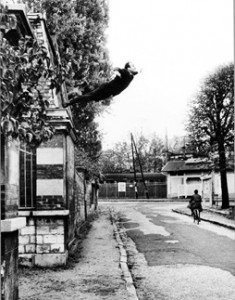By Julissa Treviño/south news editor

Declaring Space, the current exhibit at the Modern Art Museum of Fort Worth, can be defined by its ambiguity.
The theme is based on abstract space and colors. The focus lies on the work of four artists who had a major impact on the development of the theme: Mark Rothko, Barnett Newman, Lucio Fontana and Yves Klein.
The first visual encounter is with colors with Rothko (American, Latvian, 1903-1971).
The main essence of Rothko’s oil on canvas paintings is his use of color to form abstractions. He uses variations of primary colors in blocky, imperfect layouts.
Using a more structured method with parallelism and various colors, Newman (American, 1905-1970) gives abstract art new meaning.
His work is very neat and clean, but still extremely ambiguous in regard to everything else.
Among his work is Here III, a steel monolith sculpture that sits in the middle of an open room.
Fontana (Italian, born in Argentina, 1899-1968) is much more spatial. Most of his pieces have holes or slashes through the brightly painted canvas.
Supposedly, the artist literally sliced through the canvases with a Stanley knife.
This technique gives the appearance of black holes in space through a dark atmosphere.
His artwork includes Ambiente Spaziale, a “spatial environment” room installation consisting of all-white walls that can literally be walked into.
This room gives the feel of infinite space within infinite time. It is a labyrinth of space.
Klein (French, 1928-1962), a major influence through the 1950s, creates a “hyper perception of space” with ambiguity, intense colors and an innovative approach to forms.
His use of color is comprised mainly of golds and blues.
He uses the vague human figure as a means of abstract connection to space.
Klein also uses single-colored canvases as contrast to each other, expressing the vastness and boundlessness of space.
A 20-minute documentary video shows Klein’s process to artwork.
Klein had said he needed to go beyond using only his hands as a means to his art, so he developed a more innovative way of expressing himself.
He used naked female models who literally rolled around in paint, in front of an audience, to make imprints of the human form on his canvas.
By conveying the idea of abstract space and color, the four artists were part of an avant-garde movement of abstract expressionism during the late 1940s and 1950s, and even through the 1960s. Each artist portrays a stage of its development.
This exhibit will be on display through Jan. 6. Tickets are $4 for students and seniors, $10 for general admission and free for Modern members. Every first Sunday of the month and Wednesdays are free. The museum is open 10 a.m.-5 p.m. Tuesday-Saturday and 11 a.m.-5 p.m. Sunday.






























